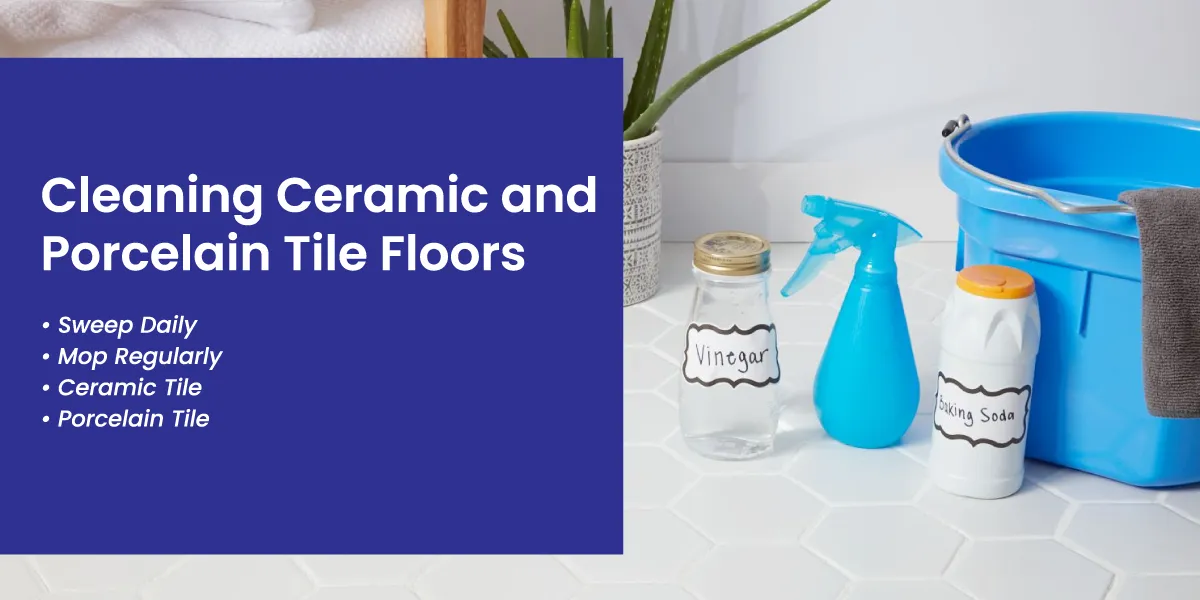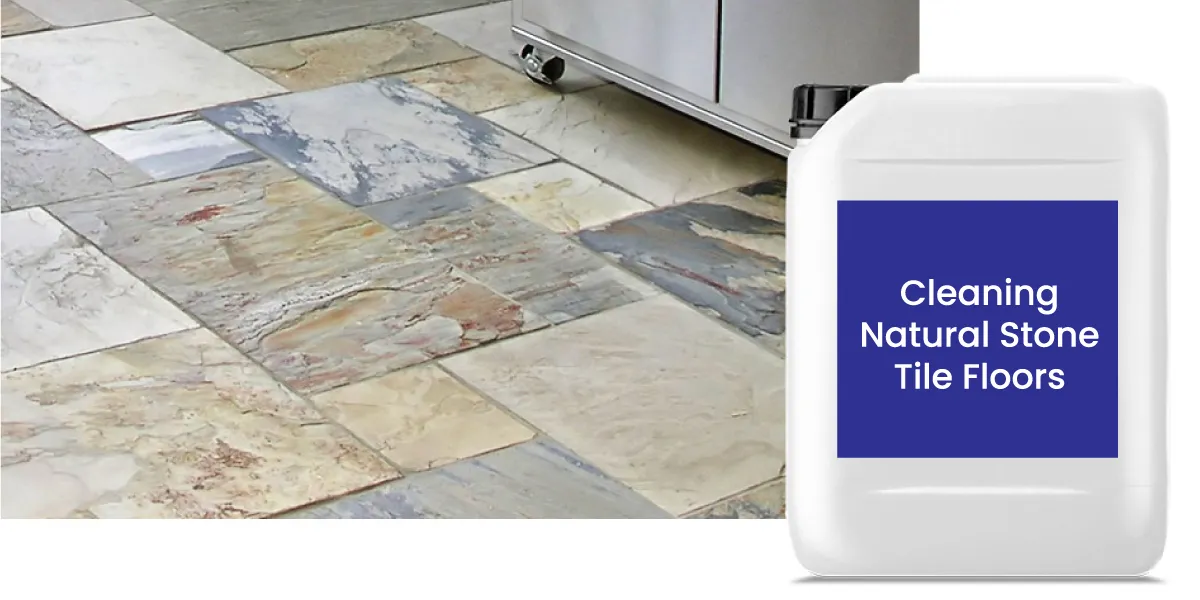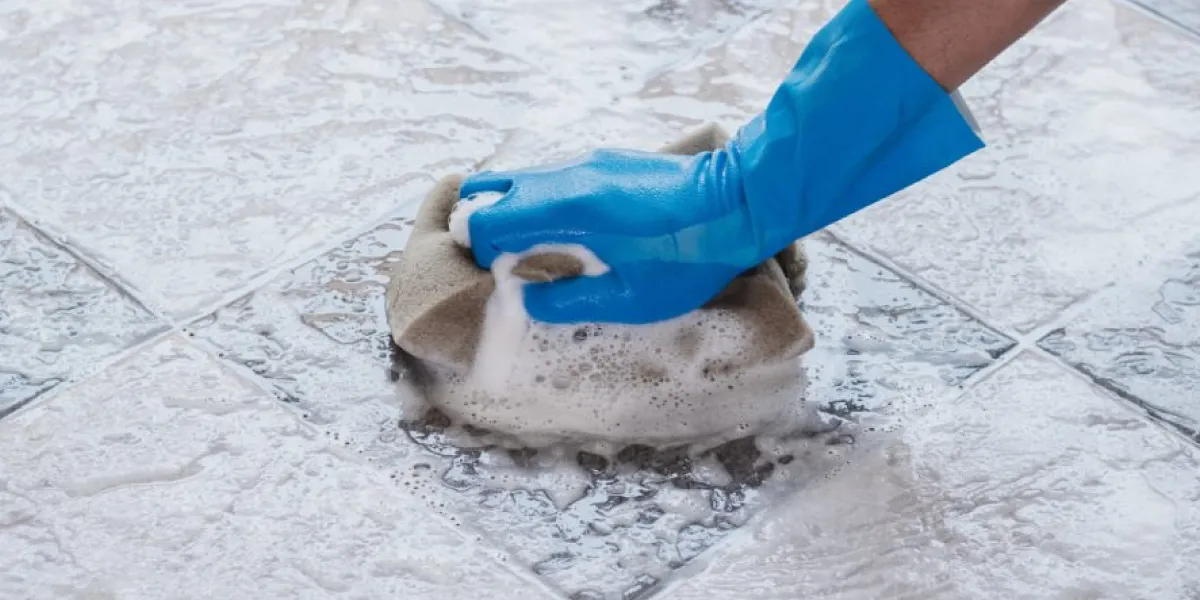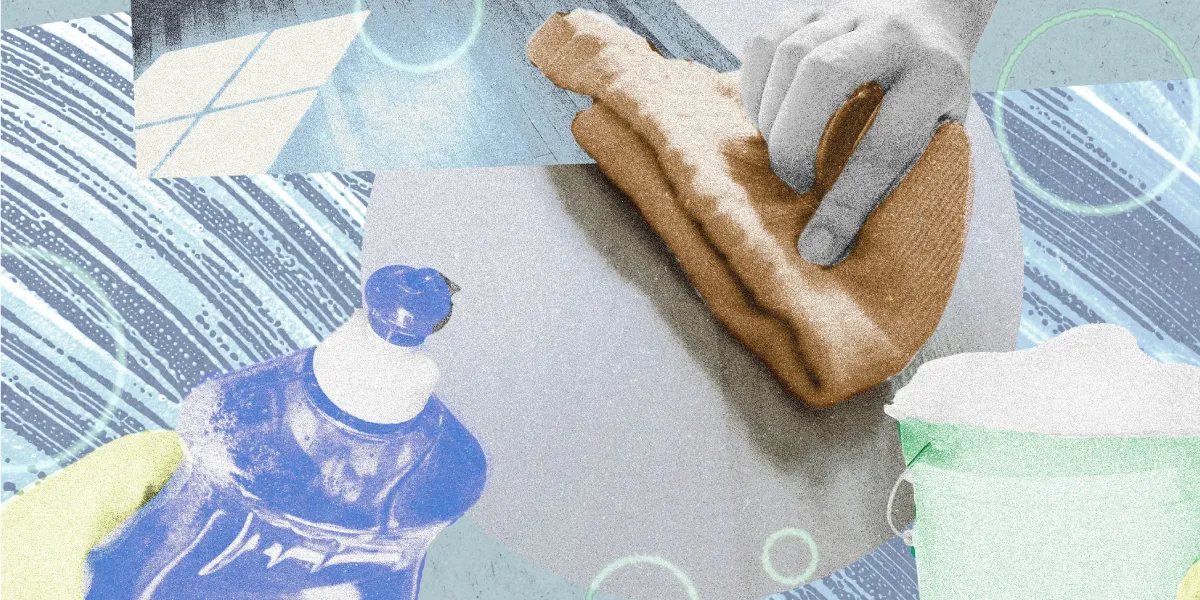Maintaining clean tile floors and grout can significantly enhance the appearance and longevity of your home. With various types of tile, including ceramic, porcelain, and natural stone, it’s essential to use the right cleaning methods to avoid damage and ensure a sparkling finish. This guide provides step-by-step instructions on how to clean different types of tile floors and grout, using both homemade and professional cleaning solutions.
Cleaning Ceramic and Porcelain Tile Floors

Sweep Daily: Use a broom or vacuum to remove loose dirt and debris from the floor.
Mop Regularly: For ceramic tile, use a string mop with hot water and a few drops of dish soap. For porcelain tile, use a microfiber mop with hot water and a cup of distilled white vinegar.
Ceramic Tile: Mop with a string mop and a bucket of hot water with dish soap. Remove soap residue with a fresh bucket of hot water and let the floor air dry.
Porcelain Tile: Mop with a microfiber mop and a bucket of hot water with distilled white vinegar. Remove cleaning residue with clean, hot water and let the floor air dry.
Cleaning Natural Stone Tile Floors

Avoid Harsh Chemicals: Do not use vinegar, baking soda, or other natural cleaners that can strip the color and alter the pH balance of natural stone.
Use Castile Soap: Mix ½ cup rubbing alcohol, 1½ cups water, and ½ teaspoon Castile soap in a spray bottle. Spray the cleaning solution onto the floor and clean with a damp mop.
Sweep and Vacuum: Use a broom and vacuum with a brush attachment to remove dirt and debris.
Clean with Castile Soap Solution: Spray the solution onto the floor and clean with a damp mop. Remove cleaning residue with a clean, damp mop.
Cleaning Grout

Mix Ingredients: Combine ½ cup baking soda, ¼ cup hydrogen peroxide, and 1 tsp dish soap to form a paste.
Apply and Scrub: Spoon the paste onto the grout lines and let it sit for 5-10 minutes. Scrub with a stiff brush and rinse with hot water.
Grout-EEZ: Apply the cleaner to the grout, let it set for 5-10 minutes, then agitate with the included brush. Rinse with warm water and let dry.
What are the best natural cleaning agents for tile floors?

The best natural cleaning agents for tile floors include a variety of household items that are effective and eco-friendly. Here are some of the most recommended natural cleaning agents:
Baking Soda: Acts as a gentle abrasive, helping to remove dirt and stains without damaging the tile.
Hydrogen Peroxide: Works as a disinfectant and has whitening properties, making it ideal for cleaning and brightening grout lines.
White Vinegar: Its acidic properties help dissolve mineral deposits, stubborn stains, and grime. It is also antimicrobial, making it effective against mold and mildew.
Mild and Non-Abrasive: Suitable for cleaning tile and grout without causing damage. It can be used in combination with water and vinegar for effective cleaning.
Citric Acid: Helps break down stubborn stains and grime. It also has natural antimicrobial properties, making it a great choice for keeping mold and mildew under control.
Mildly Abrasive: Effective in removing stains, dirt, and grime from grout lines. It also has antibacterial properties, making it useful for killing bacteria and mold.
How to Use These Agents
Baking Soda and Hydrogen Peroxide Paste: Mix ½ cup baking soda, ¼ cup hydrogen peroxide, and 1 teaspoon dish soap to create a paste. Apply to the grout lines, let it sit for 15-20 minutes, then scrub and rinse with warm water.
Vinegar and Castile Soap Solution: Combine filtered water, a little bit of castile soap (or dish soap), and white vinegar to clean the tile and grout. This solution is gentle and effective for daily cleaning.
Lemon Juice and Baking Soda Paste: Mix equal parts baking soda and lemon juice to form a paste. Apply to the grout lines, let it sit for 15 minutes, then scrub and rinse with warm water.
Salt and Vinegar Scrub: Use salt to scrub away stains and grime, then rinse with a solution of white vinegar and water. This method is effective for removing stubborn stains and grime.
What tools are essential for cleaning tile and grout?

To effectively clean tile and grout, several essential tools are recommended:
Grout Cleaning Brush: A brush specifically designed for grout lines, with stiff bristles to loosen and remove dirt and grime without damaging the tiles.
Steam Cleaner: A tool that uses hot steam to remove dirt, stains, and bacteria from the surface. It is particularly useful for deep cleaning and sanitizing grout lines.
Rotary Scrubbers: Tools that use rotary scrubbing brushes to agitate grout lines, dislodging stubborn dirt and grime for a thorough clean.
High-Pressure Rinsing Systems: Equipment that uses high-pressure water to rinse away dirt and grime, ensuring a clean and residue-free surface.
Grout Cleaning Pens: Handy tools that allow you to apply a specially formulated grout cleaner directly to the affected areas, making it easier to clean small or hard-to-reach areas.
Grout Cleaning Machines: Electric-powered tools that use high-pressure steam or scrubbing brushes to blast away dirt and grime with minimal effort.
Microfiber Cloths: Soft cloths that are effective for wiping away residue and cleaning grout lines without leaving streaks or marks.
Old Toothbrushes: Useful for scrubbing small areas of grout, especially in tight spaces where larger brushes cannot reach.
Small Chisel Tools: Plastic hand tools that can save time and effort when cleaning grout lines, especially in areas with heavy buildup.
Damp Mops: Essential for cleaning tile floors and removing dirt and grime from the surface before focusing on the grout lines.
Summary
Cleaning tile floors and grout requires the right techniques and cleaning solutions to maintain their appearance and longevity. This guide covers methods for cleaning ceramic, porcelain, and natural stone tile floors, as well as homemade and professional grout cleaning solutions. Regular maintenance and deep cleaning can keep your tile floors and grout looking their best.

